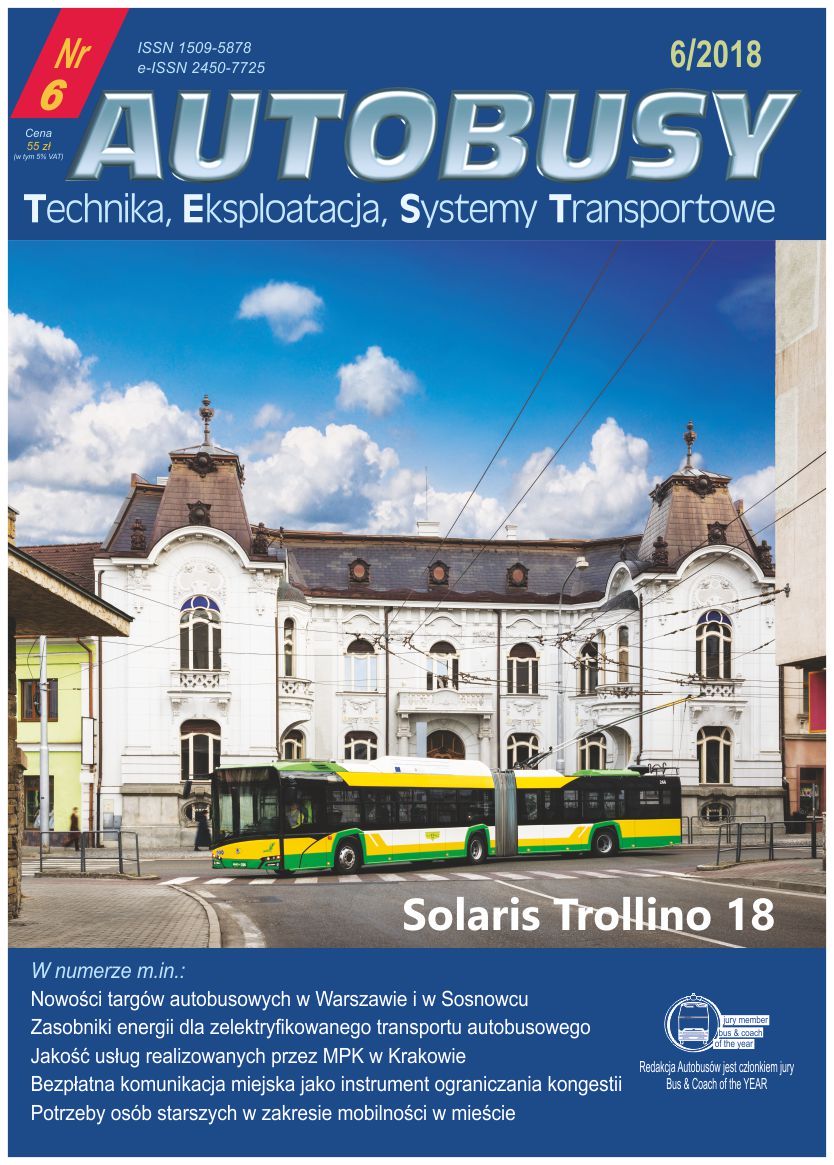Model of a telematic system in the internal transport management of the enterprise
DOI:
https://doi.org/10.24136/atest.2018.210Keywords:
transport management, enterprise, modelAbstract
The purpose of the research is to provide telematics system architecture. The technologies used in computer science are one of the most important instruments also affecting transport management in an enterprise. They may assist the utility of the system, its accessibility, the level of integration and substantially influence the performance of a company. The use of telematics tools will make it possible to optimize the supply chain within the company. This optimization applies to sales forecasting, which affects the material demand, production, etc. A mathematical model has been developed, which is based on the fusion of fuzzy classifiers with the theory of probability and the theory of mathematical evidence. The data affecting sales are, amongst other: delivery lead time, sales records, customer satisfaction, delivery compliance rate, delivery speed ratio, supply excellence ratio, lead times between order taking and delivery, etc. The study has proven that soft calculation methods based on fuzzy sets and artificial neural networks are appropriate for the tasks of the logistics chain control, and the support of telematics tools will improve the management of an enterprise.
Downloads
References
Chatfield Ch., Holt-Winters Forecasting: Some Practical Issues. The Statistician, vol. 37 (1986), pp. 129-140.
Kurzyński M., Sequential Classification Via Fuzzy Relations, Artificial Inteligence and Soft Computing – ICAIS2006, 8th International Conferebce, Zakopane, Poland, June 2006
Łęski J., Zbiory rozmyte i ich interpretacja. Wprowadzenie do teorii możliwości,Wydawnictwa Politechniki Śląskiej, Gliwice 2001, s. 469-47
Rutkowska D., Piliński M., Rutkowski L., Sieci neuronowe, algorytmy genetyczne i systemy rozmyte. Wydawnictwo Naukowe PWN, Łódź 1999
Tarapata Z., Symulacyjna metoda doboru optymalnych parametrów w prognostycznych modelach wygładzania wykładniczego. Zeszyty Naukowe Wyższej Szkoły Ekonomicznej, Warszawa 2000.
Topolski M., Komputerowe algorytmy rozpoznawania sekwencyjnego z modelem łączącym teorię ewidencji matematycznej z teorią zbiorów rozmytych, Praca doktorska, pre 1/07 Politechnika Wrocławska 2007
Yar M., Chatfield Ch., Prediction Intervals for the Holt-Winters Forecasting Procedure. International
Żołnierek A.: The pat tern recognition alghorithm for controlled Markov chains with learning and additional classifier. W: Advanced simulation of system. Procedings of the XXVth International Autumn Colloquium. Ed. Jan Stefan [Sv. Hostyn, Czech Republic, September 8-10, 2003.



